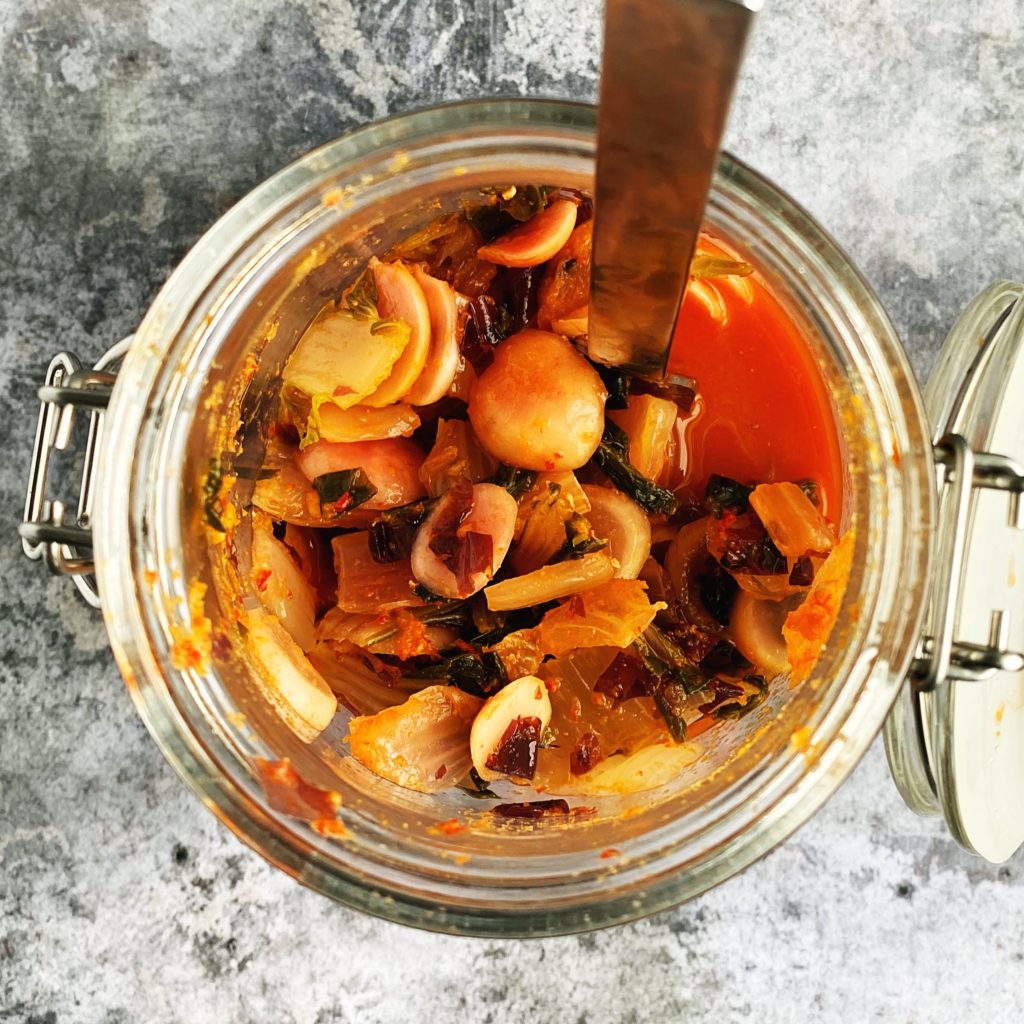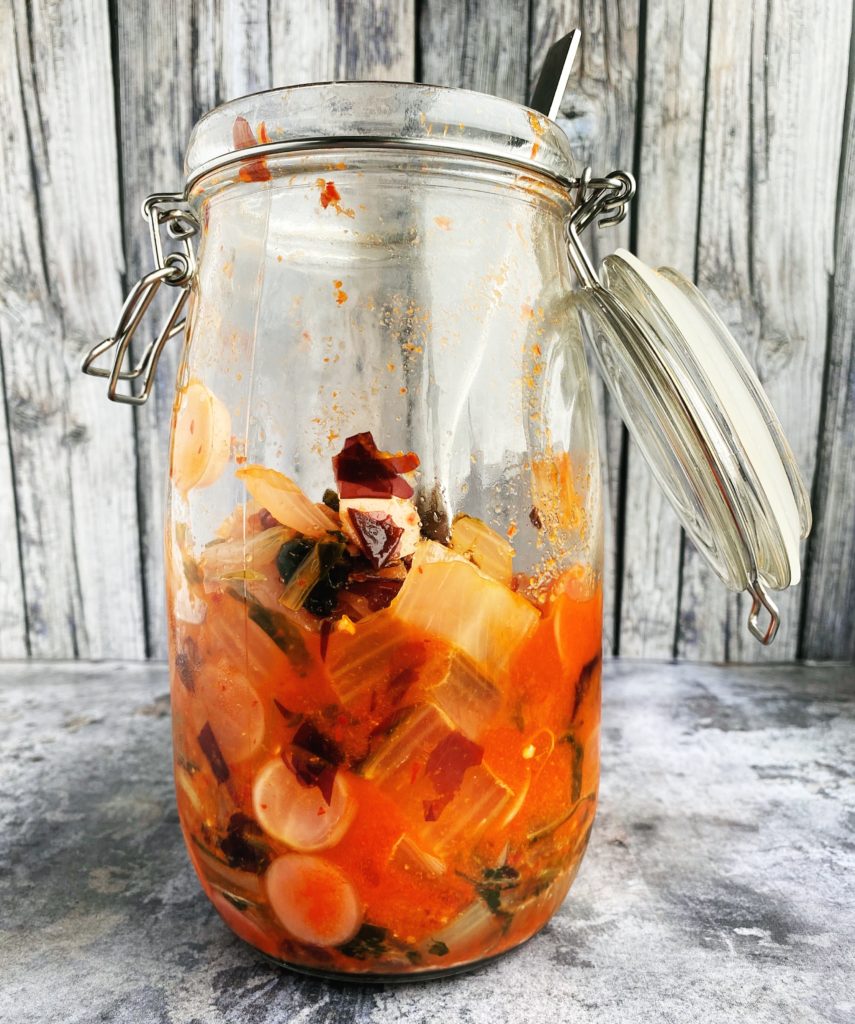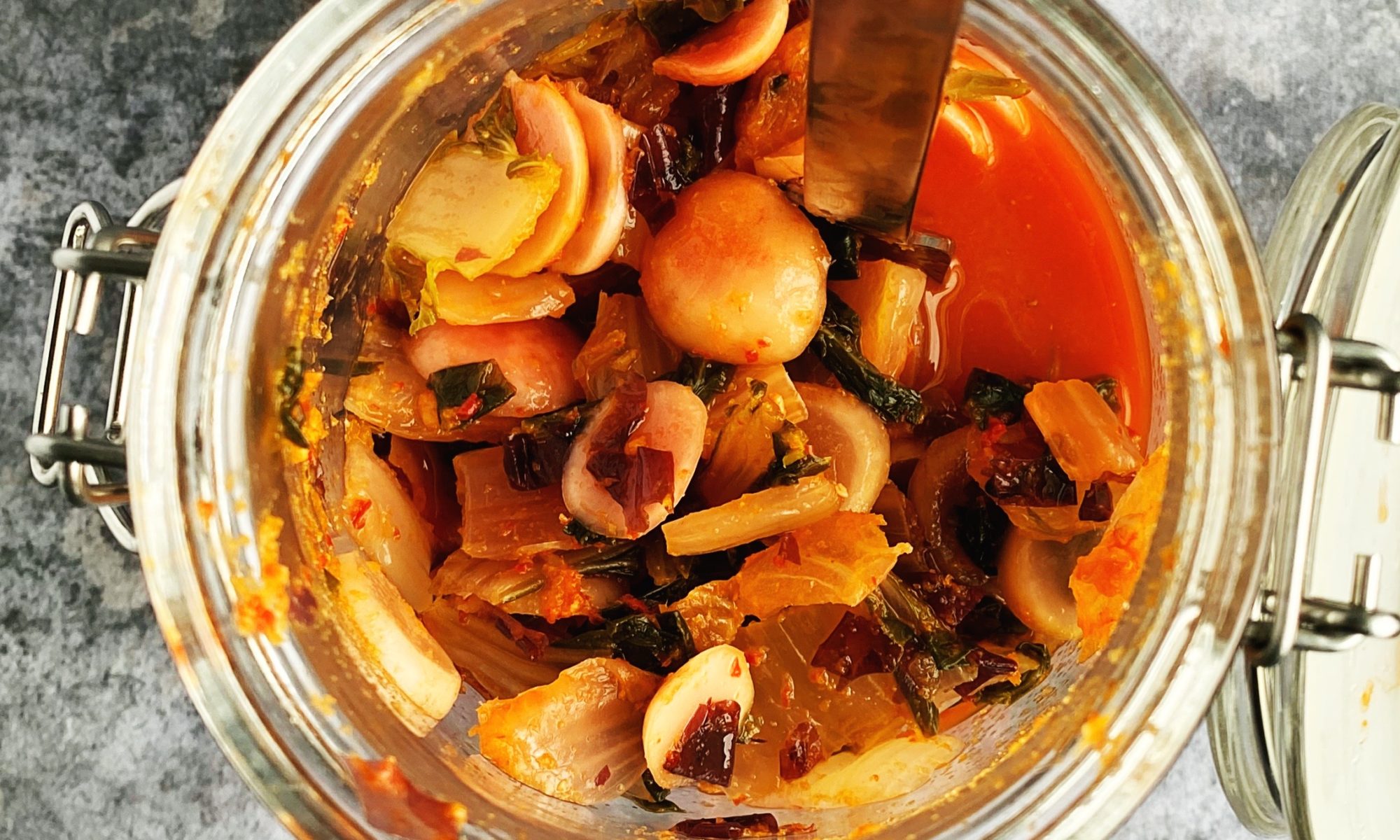
Like all fermented vegetables, kimchi is incredibly good for you. Luckily it’s mind-blowingly delicious too…and very easy to make yourself. I’ve made it with pak choi, seaweed and little radishes this time but you can play around with the ingredients and make it your own. Use local, seasonal vegetables for the best results. Here’s my quick tutorial video so you can see how easy it is to make yourself. Loads more fermenting inspiration in my book which is available to add to your veg order here. Any questions? Pop a comment down below and I’ll get back to you asap. Liz x
Ingredients
- 2 large pak choi
- 2 bundles of radishes
- 1 handful of dried seaweed
- 1 tbsp natural salt
- 3 fresh chillies (or dried to taste)
- 1 thumb of fresh ginger
- 6 cloves of garlic

Method
Gather and rinse your ingredients. Find a large jar, a chopping board, a sharp knife, a spoon, a rolling pin, a blender, a mixing bowl and a small jar or glass that fits snugly inside your large jar. Ensure all your equipment is nice and clean – no need to sterilise.
Reserve an outer leaf or two from your pak choi. These will be used as ‘followers’ at the end of the recipe.
Slice the rest of the pak choi into bite sized pieces and put them in the large bowl.
Thinly slice the radishes and add them to the bowl too.
Rinse and slice the seaweed too (if you are using nori, no need to rinse first) and add it to the bowl.
Add the salt to the bowl and use your hands to tumble the ingredients and evenly disperse the salt. Sit the bowl to one side to give the salt time to dissolve and start drawing brine out of the vegetables.
Meanwhile make the spice paste. Take the green stalks off the chillies and roughly chop them. Put them in a blender. Peel and chop the ginger and add that to the blender too. Peel the garlic and then blend the 3 ingredients together into a bright space paste.
Taste the salted vegetables and add more salt if needed. They should taste pleasantly salty and should now look wet and wilted. If they are too salty, add some more vegetables eg grated carrot or another pak choi.
Mix the spice paste through the salted vegetables. Be careful not to get any on your bare skin. Wear gloves or use a spoon.
Then pack the mixture carefully and firmly into the large jar. Use the rolling pin to tamp down each new layer to ensure no air pockets are left in the jar. Leave at least an inch or two of head room in the jar.
Now cover the chopped vegetables with the ‘followers’ (the leaves you reserved earlier). Tuck everything neatly in under the brine. Use the spoon to help tuck the leaves down the sides of the jar and ensure no little floaty bits are above the brine.
Weigh down the ‘followers’ with a small glass/jar/ramekin. See the video above for more details.
Then close the jar – if you are using a clip top jar, remove the rubber seal to allow gases to escape, otherwise just close a regular jar loosely or remember to ‘burp’ the jar every day to allow gases to escape by briefly opening and closing it.
Put the jar on a tray or in a bowl to catch any overspill and set it on a dark shelf to ferment at room temperature for at least one week. Keep an eye on it. Does it need burping? If so, do it over the sink! Have the gases caused the veg to rise up above the brine? If so push the weight down to expel and air bubbles and get everything neatly under brine again.
After one week at room temperature, taste your kimchi. It should be tangy, spicy and delicious. If you are happy with the tang-level, remove the weight and pop the jar in the fridge. It should last well for at least one month, if not many more.
*Tips to make your fermented food last longer in the fridge: No double dipping! Consider transferring the ferment to smaller jars before refrigerating.

